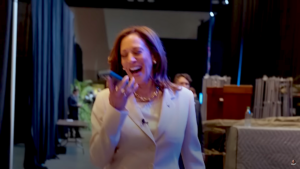
Published 04/19/2024 19:37 | Edited 04/19/2024 19:44
India witnessed a massive turnout to the polls in the first phase of the general elections, an event of monumental proportions that reflects the country’s democratic vigor and political complexity. As Prime Minister Narendra Modi seeks a third term, the vote is marked by fierce competition between his Bharatiya Janata Party (BJP) and a diverse alliance of opposition parties.
Before the polls closed this Friday (19), the Election Commission released a mixed voter turnout rate, ranging from 40% in the vast northern state of Bihar to 68% in the small northeastern state of Tripura. This inaugural phase, which covered 102 constituencies in 21 states and territories, is just the beginning of a series of votes that will extend over six weeks.
The call for voter participation was strong from both the BJP and the opposition sides. Modi, on his social media, urged voters to vote in record numbers, while the main opposition party, the Indian National Congress, urged voters to reject “hate and injustice”, with promises of greater affirmative action and welfare, while highlighting the need to preserve democratic institutions.
India, with around 969 million registered voters, has seen a mix of worries and hopes influencing voters’ choices. Issues such as employment, inflation and rural well-being are at the center of the electoral debate, reflecting the everyday concerns of the Indian people.
Using electronic voting machines, Indian voters expressed their choices by pressing the button corresponding to their preferred candidate or opting for the “none of the above” option. However, the voting process was not without incident. Voting in Manipur was disrupted due to allegations of irregularities, while a paramilitary security officer was injured in an explosion in Chhattisgarh state.
Attacks on minorities, particularly Muslims, have been a sensitive issue since Modi’s rise to power, while controversies surrounding freedom of expression and the press also influence the political environment.
Amid this, BJP spokesperson Mohan Krishna expressed confidence in the party’s victory, highlighting social security schemes and a “corruption-free government” led by Modi as strengths that have provided satisfaction and confidence to the Indian people. He vehemently refuted allegations of democratic backsliding under the BJP government, terming them as “absolute rubbish”.
However, there are concerns within the BJP itself about complacency among voters and party members, highlighting the need to attract more people to vote and ensure a convincing victory.
Meanwhile, the opposition, led by the Indian National Alliance for Inclusive Development (INDIA), criticized the BJP precisely for rising unemployment and corruption, emphasizing the need for inclusive growth and social justice. However, the alliance faces challenges in forging unity, accusing the government of hampering its efforts.
With the elections unfolding in several phases, India’s political future remains uncertain. For many voters, the choices at the ballot box reflect the hopes and concerns of a complex and diverse nation. The next phase of the elections is scheduled for April 26, with the country closely watching the developments of this democratic journey.
Election of deepfakes and AI
In the increasingly digital world of Indian politics, the battle for voters’ attention now extends into the realm of memes and artificial intelligence (AI). On February 20, the main opposition Indian National Congress (INC) and the Bharatiya Janata Party (BJP) took this competition to Instagram, releasing AI-generated videos that quickly gained prominence.
The INC video, titled “Chor” (thief), featured a clip from a new Hindi music album, where Prime Minister Narendra Modi’s digital image was inserted. Humorously, the song’s lyrics were adapted to describe Modi as a thief, handing over the country’s resources to Indian business tycoons. While not hyper-realistic, the video leveraged technology to highlight criticisms of Modi’s close ties with these tycoons.
On the other hand, the BJP shared a video that showed Modi campaigning on the streets, combined with real images of the beneficiaries of his policies. The highlight was the background soundtrack: an old patriotic song in Hindi, recreated with an AI voice, that highlighted Modi’s supposed achievements over the years.
This new wave of AI-generated political content marks a turning point in the way Indian political parties engage with voters on social media, as well as a fundamental shift in the way media is consumed during political campaigns.
Both the INC and the BJP have shared multiple instances of AI-altered content on their official Instagram accounts since February 20. This raises questions about the transparency and disclosure of such content, especially in a political context.
Meta’s current policies require advertisers to disclose when using AI-edited political ads, but these provisions do not apply to political pages and accounts. Sam Gregory, executive director of the nonprofit Witness, highlights the need for transparency, especially in political contexts where the ability to detect the use of AI is limited and there are risks of fraud.
Meanwhile, the Election Commission of India is yet to respond to questions about guidelines for political parties sharing AI-altered content. The concern about the manipulation of digital media to influence the electorate is real, especially in a country where social media plays an increasingly important role in politics.
As political parties explore the potential of AI to create engaging and impactful content, experts warn of the need for clearer regulations and transparent disclosure about the use of this technology. As AI becomes more sophisticated, it is essential to ensure that voters can distinguish between genuine and manipulated content, especially in a political context where misinformation can have significant consequences.
Source: vermelho.org.br

